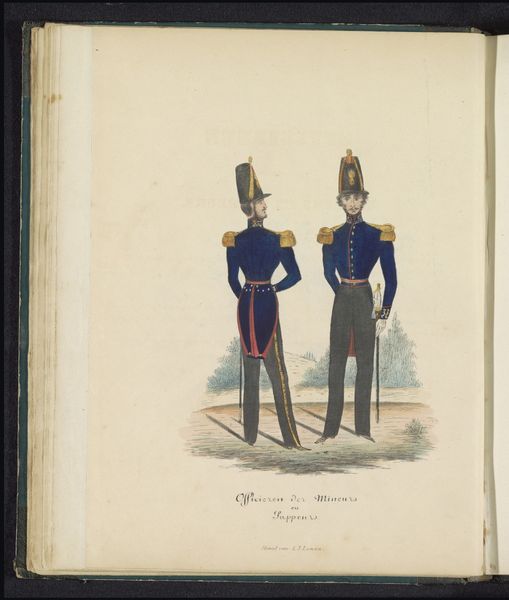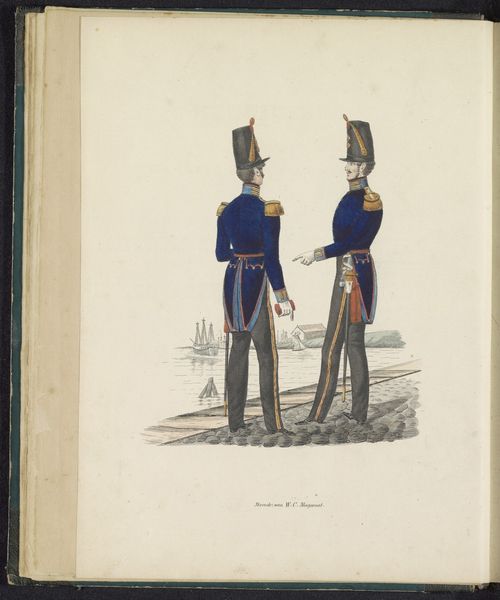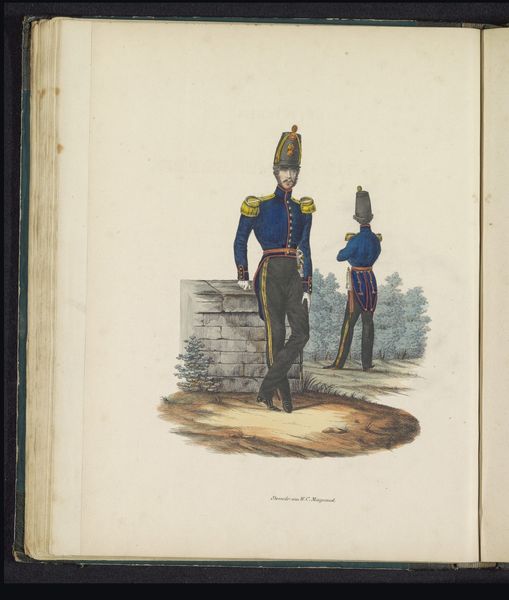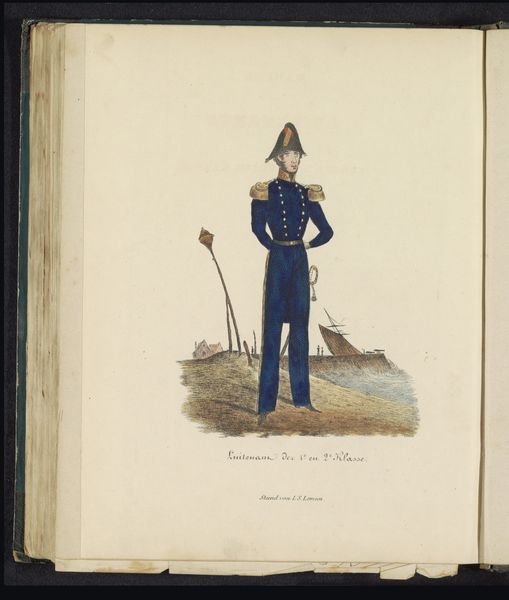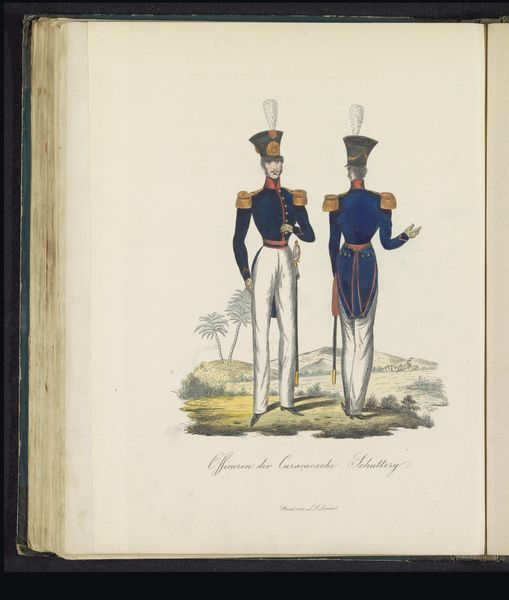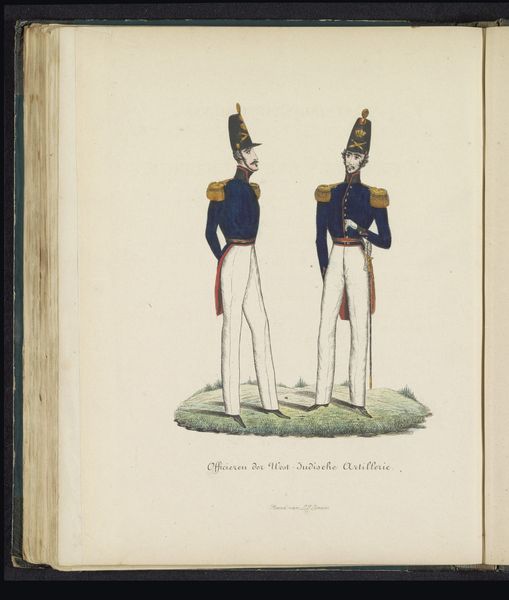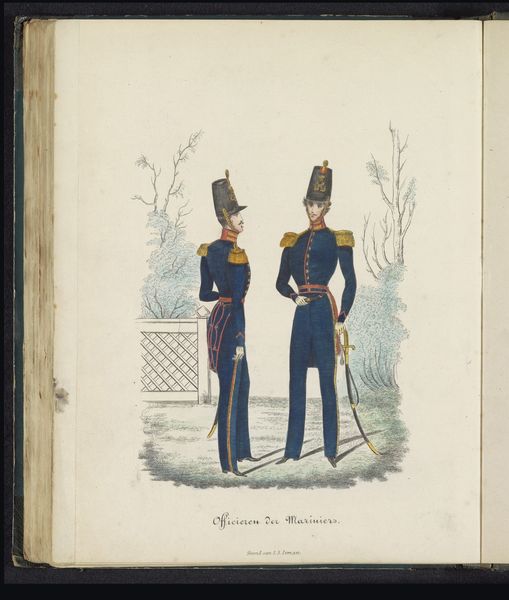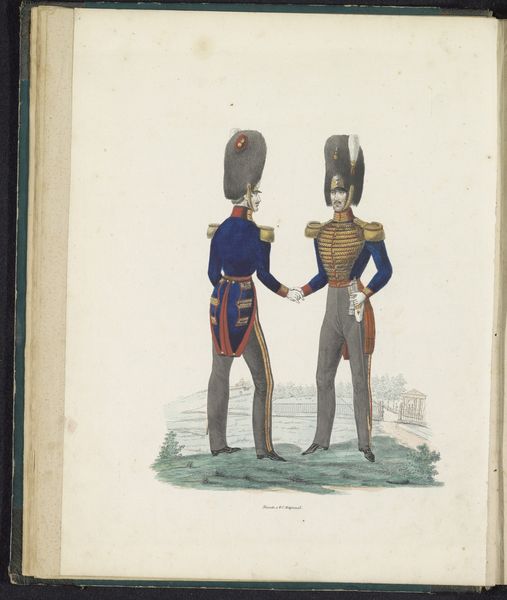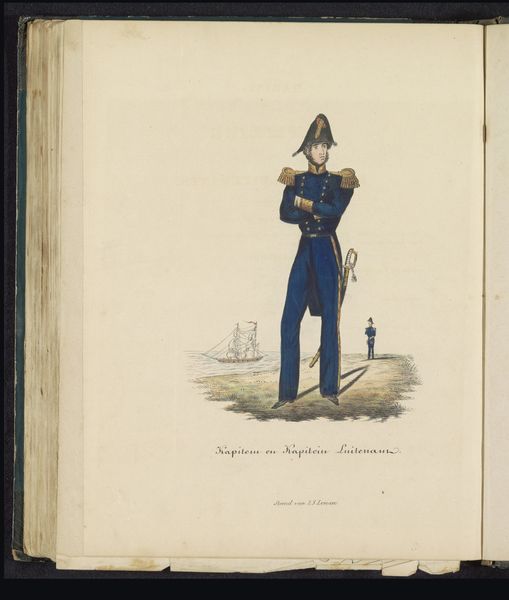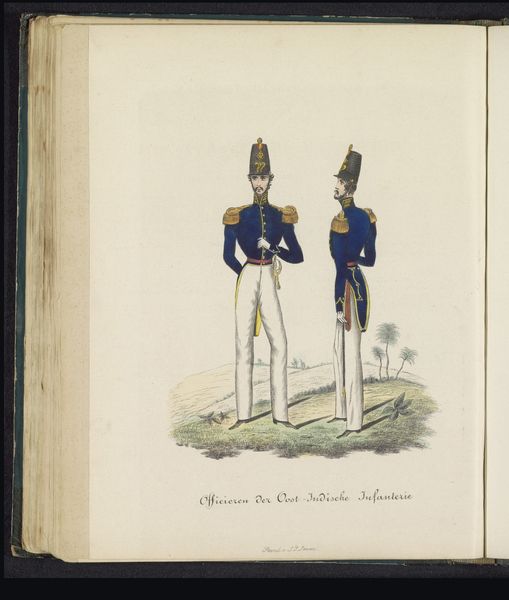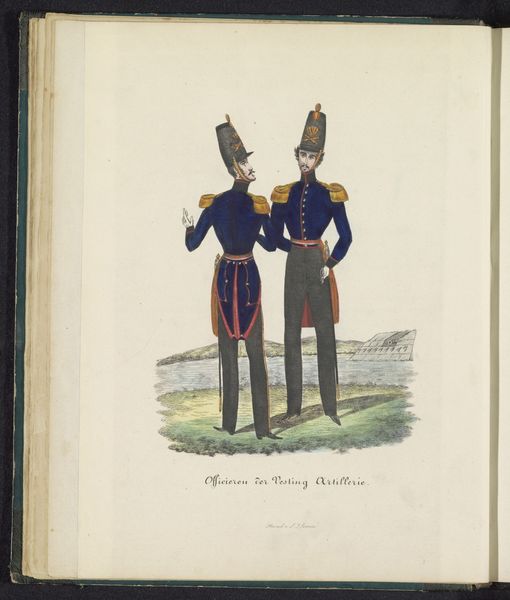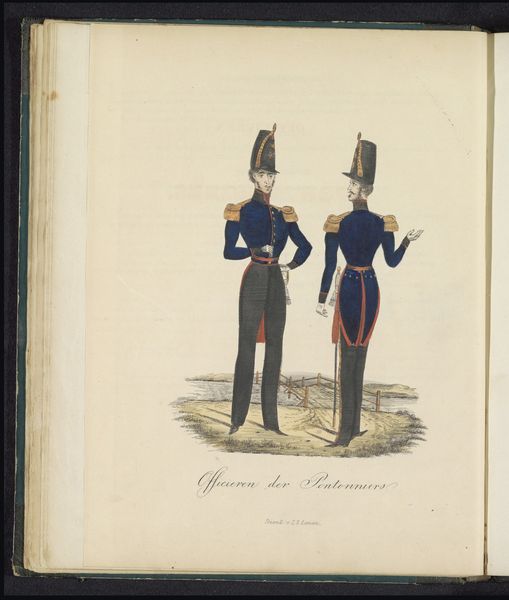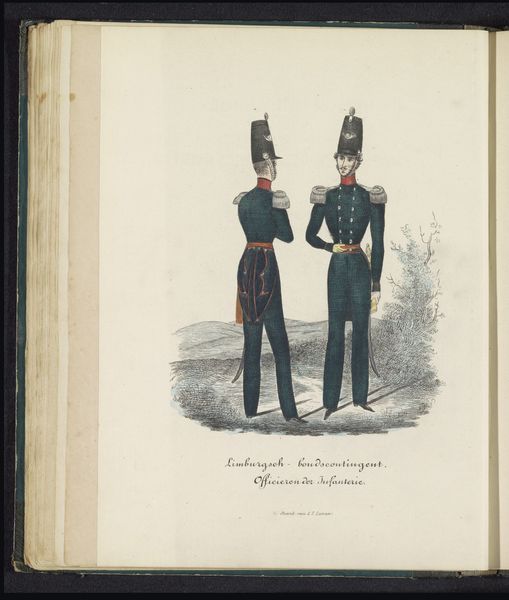
painting, watercolor
#
portrait
#
painting
#
watercolor
#
coloured pencil
#
genre-painting
#
academic-art
#
watercolor
Dimensions: height 270 mm, width 200 mm
Copyright: Rijks Museum: Open Domain
Curator: This watercolor piece before us, housed here at the Rijksmuseum, offers a meticulous look at the "Uniform van de officieren van de infanterie, 1845," brought to life by Willem Charles Magnenat in 1845. Editor: It’s astonishing how detailed it is. Something about that stern gaze amidst the garden setting—it’s both formal and almost whimsical. A serious duty juxtaposed against what looks like a pleasure garden! Curator: It does strike that balance, doesn't it? Magnenat, I think, captures a very specific moment in Dutch military history. Note the way the uniform's colours are rendered; quite carefully designed to showcase not only rank, but also belonging within the political and social theatre of the time. Editor: Those colours, they feel so deliberate. That almost-electric blue of the coat against the gray of the trousers, punctuated with the red...it speaks volumes. The uniform almost feels like a costume, signalling status and belonging, in a rigidly ordered society. It must have been incredibly powerful to wear. Curator: Absolutely. Consider the function of such uniforms. More than simple clothing, they reinforced hierarchy. In the Netherlands at this time, emerging from the Napoleonic era, establishing and projecting authority through symbolic visual cues like uniforms was extremely important. And this particular portrait served almost as a manual for infantry officers. Editor: But it's also kind of romantic, isn't it? Standing tall against what looks to me like a stage set. It feels strangely detached, and perhaps Magnenat subtly played with our sense of the pompous, creating just a smidge of gentle mockery, ever so slight, for our entertainment? Curator: Perhaps, or perhaps Magnenat understood that performance and visibility are inseparable. And by staging him in this way, within sight of, but not at, the grand architecture, they allow a critical perspective. Editor: Precisely! These glimpses into the past never feel stale, somehow always alive. Thank you for adding insight into its meaning! Curator: A genuine pleasure to explore its cultural importance with you!
Comments
No comments
Be the first to comment and join the conversation on the ultimate creative platform.
